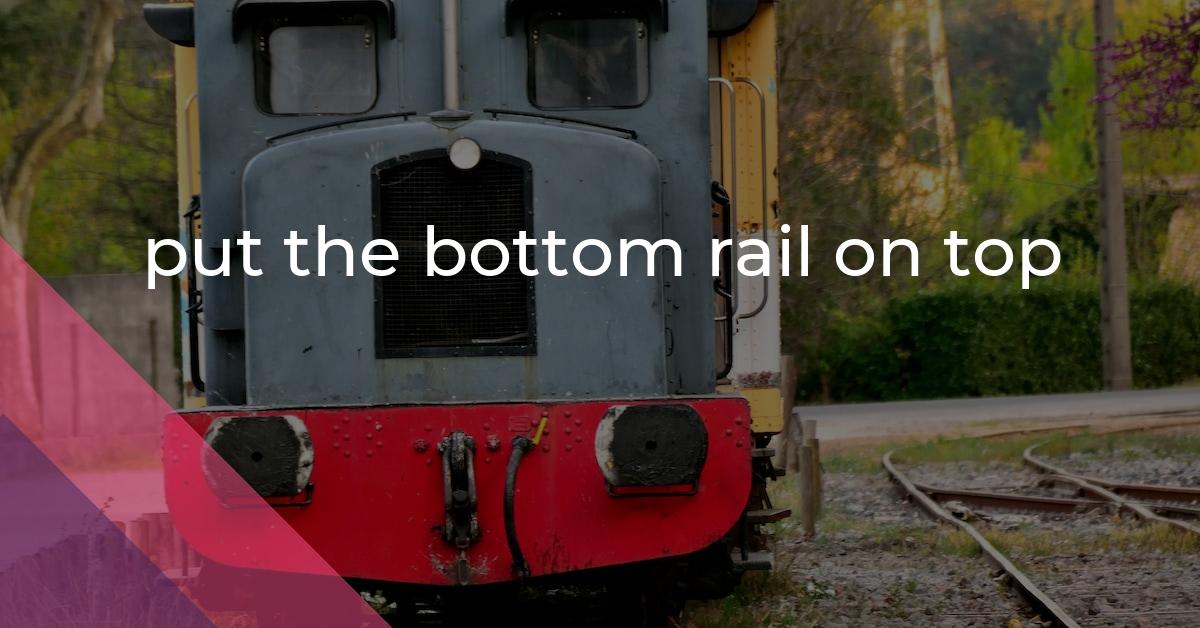put the bottom rail on top: Idiom Meaning and Origin
What does ‘put the bottom rail on top’ mean?
To "put the bottom rail on top" means to reverse the order of things or to change the established hierarchy. It implies a significant shift in power or authority.

Idiom Explorer
When something is turned upside down, it means that its normal position or state has been completely reversed or changed.
The idiom "rock bottom" refers to the lowest possible point or level of something. It is often used to describe a situation or a person's life when they have hit a point of extreme difficulty or failure.
Idiom: put the clock back
Meaning: To revert to a previous state, usually with negative connotations, typically referring to the inability to change or reverse past actions or circumstances. It emphasizes the impossibility of returning to the way things were before.
When someone puts the cart before the horse, they are doing things in the wrong order or confusing cause and effect.
The idiom "put something into perspective" means to consider a situation or issue in relation to its true importance or significance, in order to gain a better understanding or judgment of it.
The idiom "put someone on to" means to introduce or make someone aware of something, usually a person or an idea.
The idiom "put someone in their place" means to assert one's authority or dominance over someone, often by reminding them of their lower status or making them feel inferior.
The idiom "put facts on the ground" means to establish or provide concrete evidence or proof to support one's statements or claims.
Counterintuitive Tale
The idiom "put the bottom rail on top" has a rich history and has been used in various contexts over the years. The phrase is derived from American English and is an idiomatic expression that means to reverse or invert the natural or expected order of things. It originated during the 19th century in the United States and is often used to convey a sense of social or political upheaval.
This idiom has been used in discussions about race, class, and power dynamics. It symbolizes a significant shift in the established order and suggests a reversal of power dynamics, where those who were once at the bottom rise to the top. The idiom can be related to other idioms such as "turn upside down", "bottom the house", "put someone in their place", "bottom of the line", and "at bottom".
One popular folk song called "The Bottom Rail" by Bobby Horton uses the phrase in its title. There are also variations of this idiom, including "turn the tables" and "reverse the order". The use of this idiom highlights the disruptive nature of such reversals and draws attention to the changing balance of power. It serves as a reminder that societies are not static and that hierarchical structures can be challenged and reshaped.
Furthermore, the idiom implies that the process of putting the bottom rail on top is not easy or without consequences. There may be resistance or pushback from those who traditionally held positions of power. It invites contemplation of the complexities and implications of such reversals, urging individuals to consider both the potential benefits and the potential risks involved.
Overall, the idiom "put the bottom rail on top" captures the essence of social transformation and serves as a potent reminder that history is often characterized by unforeseen shifts in power and authority. It leaves us with the lingering possibility of questioning the existing order and envisioning a different future.
Example usage
Examples of how the idiom "put the bottom rail on top" can be used in a sentence:
- After years of hard work, Mary finally put the bottom rail on top when she became the CEO of the company.
- John's promotion to manager puts the bottom rail on top, as he started at the company as an intern.
- With her exceptional skills and determination, Sarah managed to put the bottom rail on top and win the prestigious award.
More "Reversal" idioms



